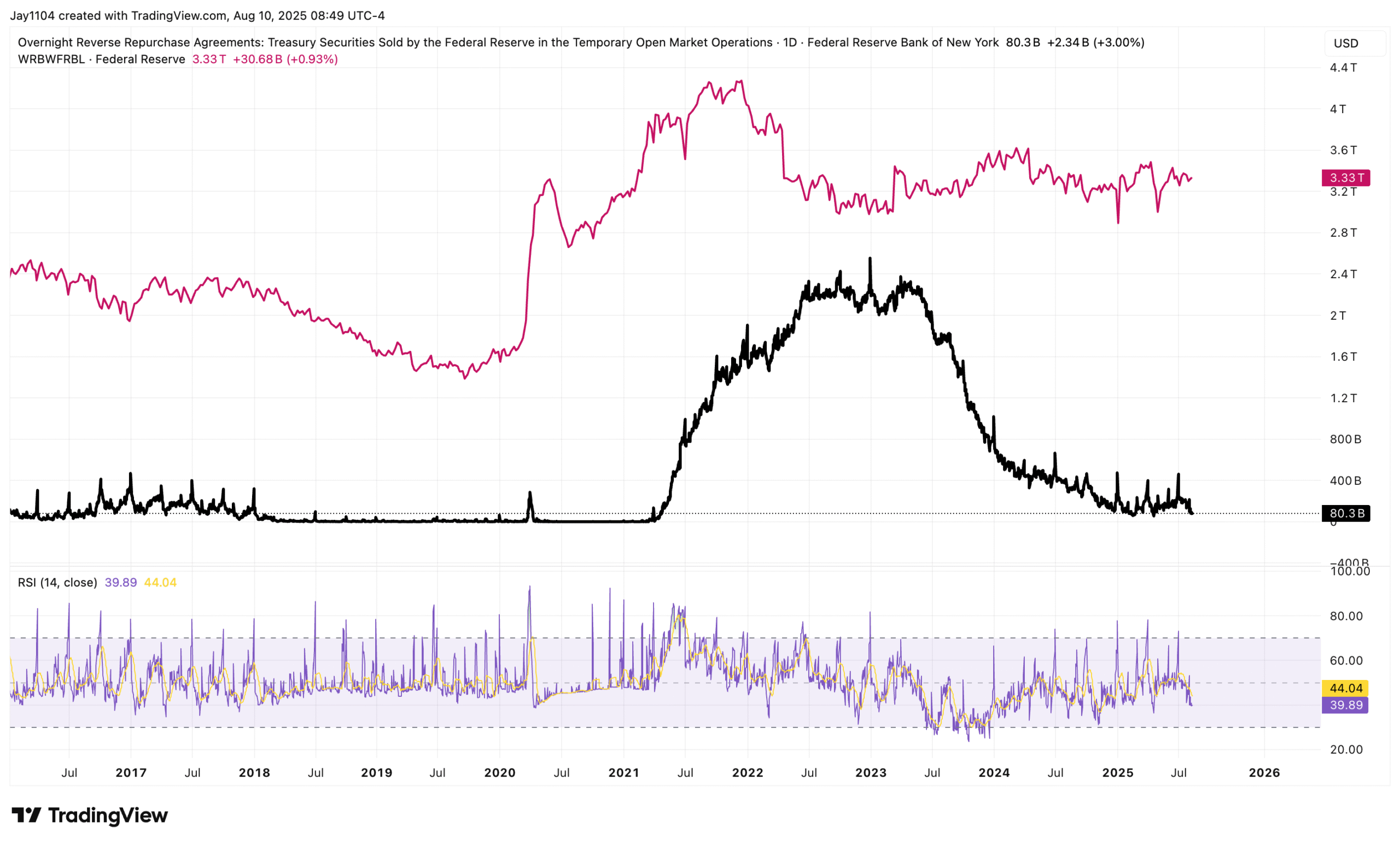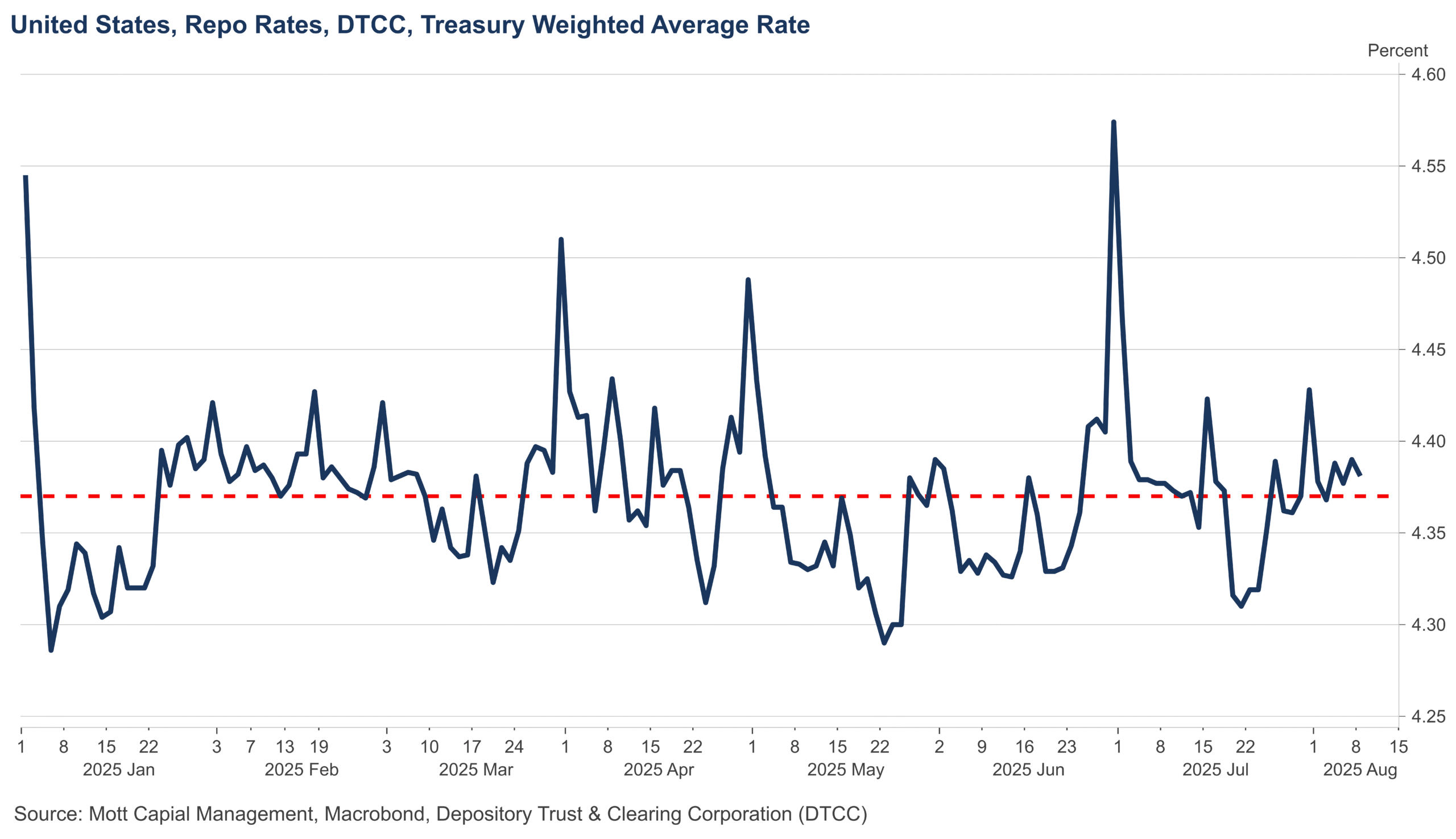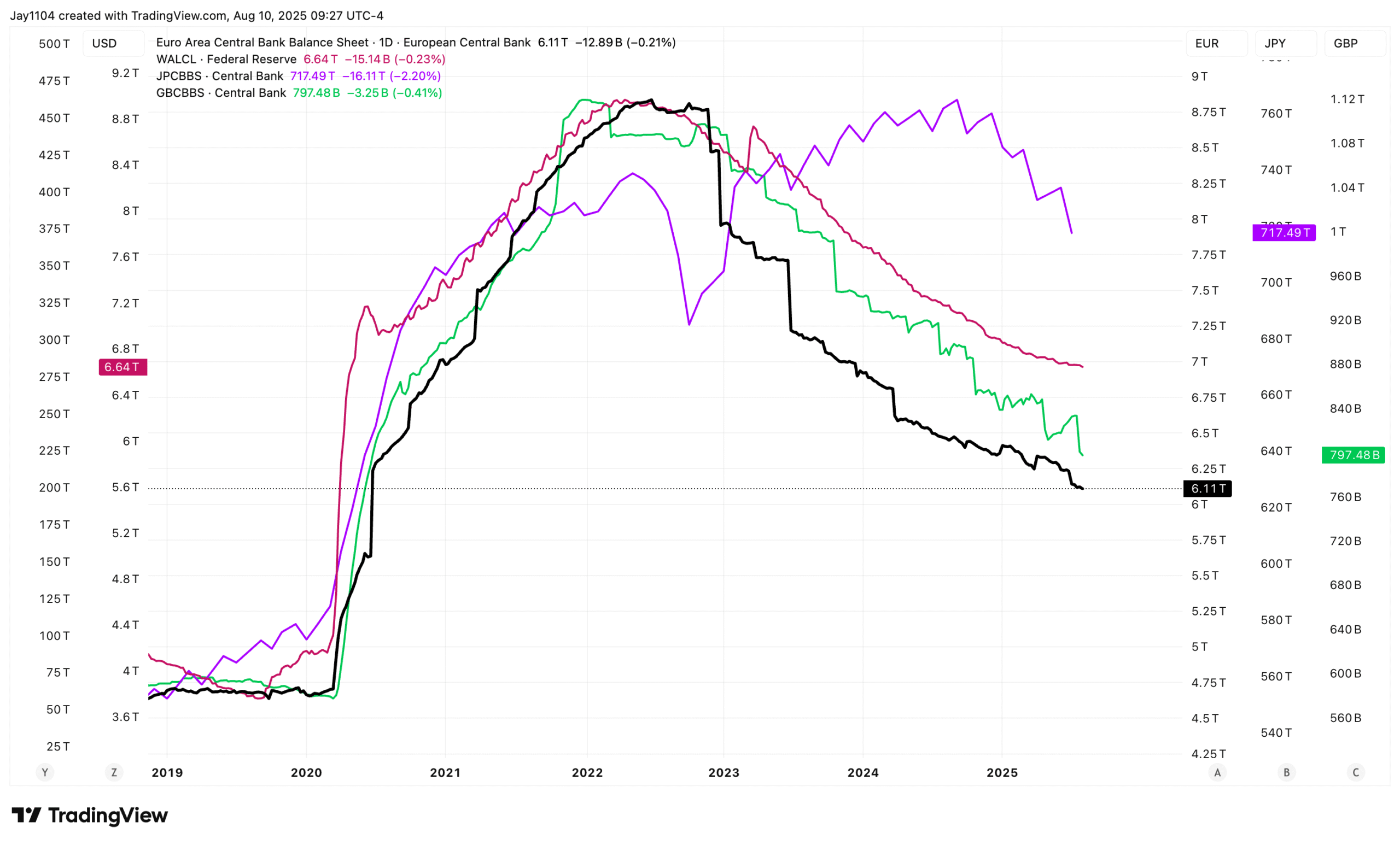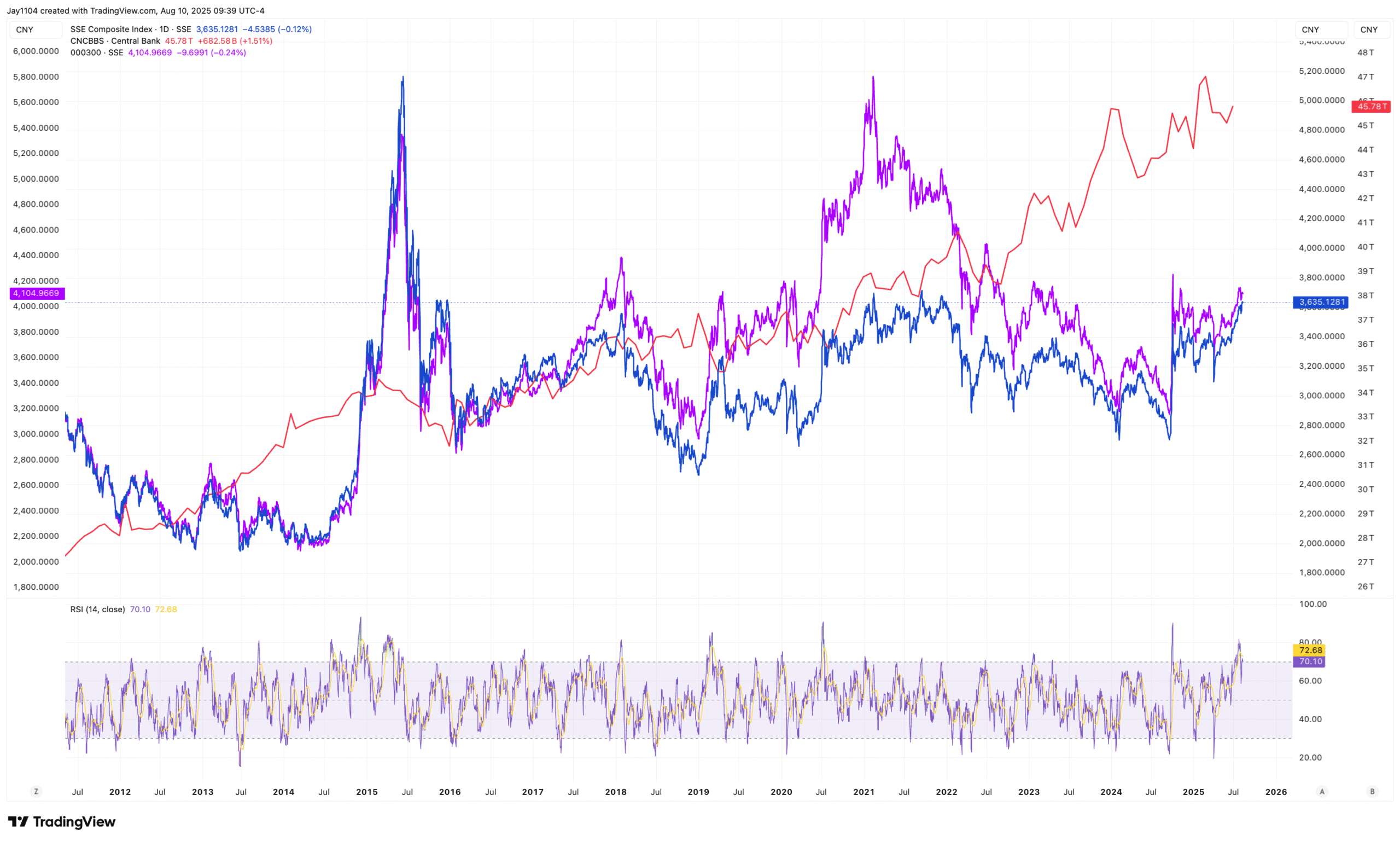There will be three large Treasury settlements on Tuesday, Thursday, and Friday, with roughly $130 billion set to be drained from the overnight funding market. The reverse repo facility ended the week at just $80 billion on Friday, down from $214 billion on July 31. With the facility now essentially depleted, any further increase in the TGA will need to come from other sources, which likely means reserves will begin to take a hit.
The overnight repo rate average has been running higher this month than it did in May and June, and is more in line with the range seen in February and March.
There is not much that can be done here, all one can do is take an educated guess as to where the funding will come from for all of the these settlments of Treasuries that are being issued, and in the end the days of excess liquidity are pretty much over, with the reverse repo facility nearing the effective lower bound.
Central banks worldwide are still in the process of shrinking their balance sheets. The only central bank currently in an expansion phase is the People’s Bank of China. China has very tight capital controls, and I would assume that the vast majority of capital generated in China remains within the country.
There are ways, perhaps, for it to come out in and , but who knows how much actually comes through those channels.
The question to ask when it comes to China is that if liquidity in China is rising, why isn’t the stock market rising? It has been effectively range-bound since the fall of 2024. I don’t think China’s balance sheet gains are having a significant impact on global markets. 
As the Treasury issues more debt, it must be funded from somewhere — and with excess liquidity essentially drained, the question is from where. This is the central issue now. It could mean higher long-end rates, lower stock prices, or a draw from money market accounts. Whatever the case, the cash has to come from somewhere. When conditions tighten, repo rates tend to rise, making it worthwhile to keep a close watch on SOFR daily.
On Friday, the rose about 78 bps, while the equal-weight gained just 18 bps. The advance was driven largely by Apple’s (NASDAQ:) strong performance rather than broad market strength. Notably, Apple’s stock price and implied volatility both rose — a sign that heavy call buying is pushing up IV, which typically occurs during a gamma squeeze.
Market breadth has been weak in recent weeks, likely tied to the ongoing liquidity drain. For a clearer picture of what’s really happening, it’s worth paying more attention to areas outside the major indexes, such as the DIA (BME:), , and RSP.
